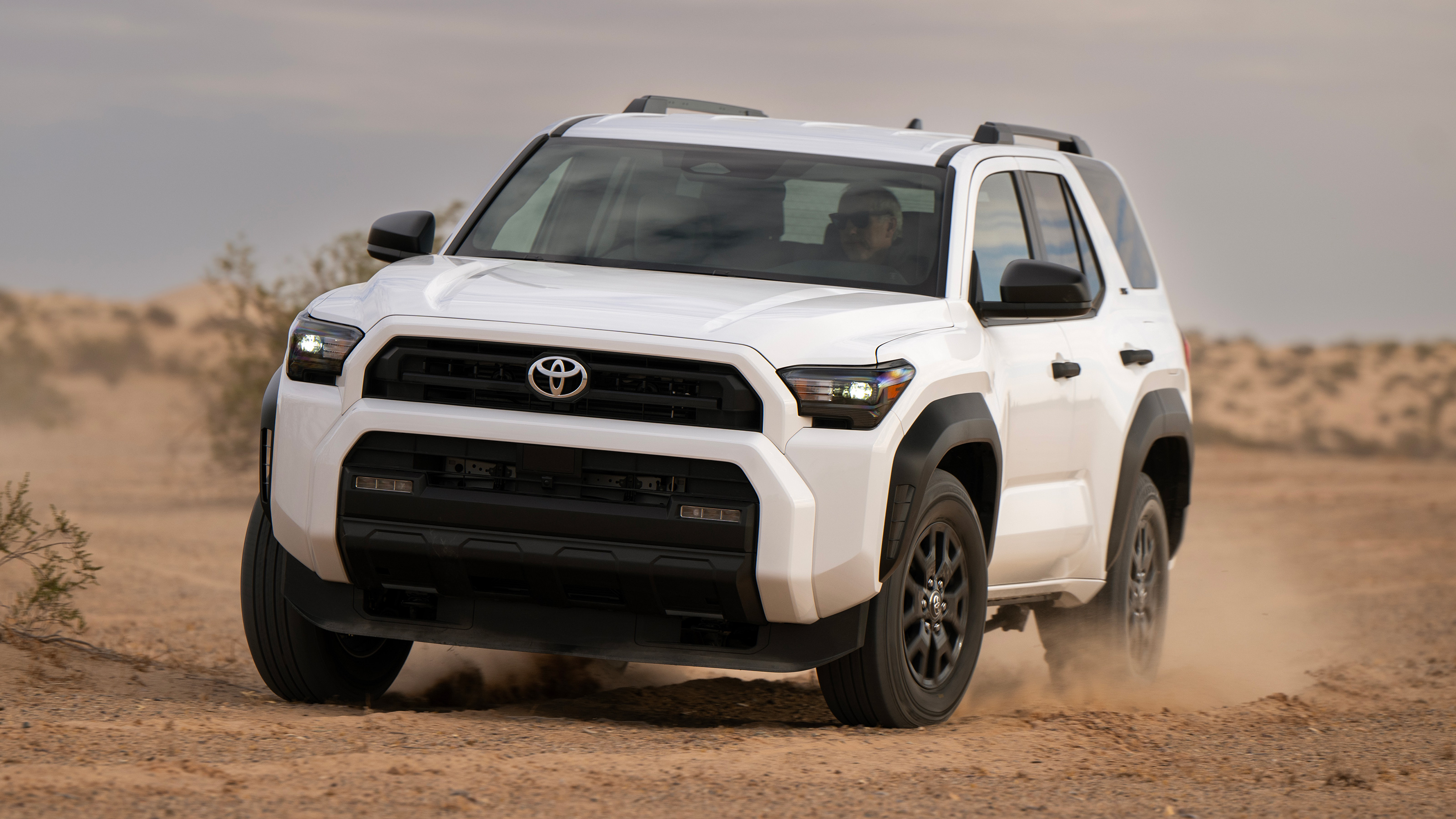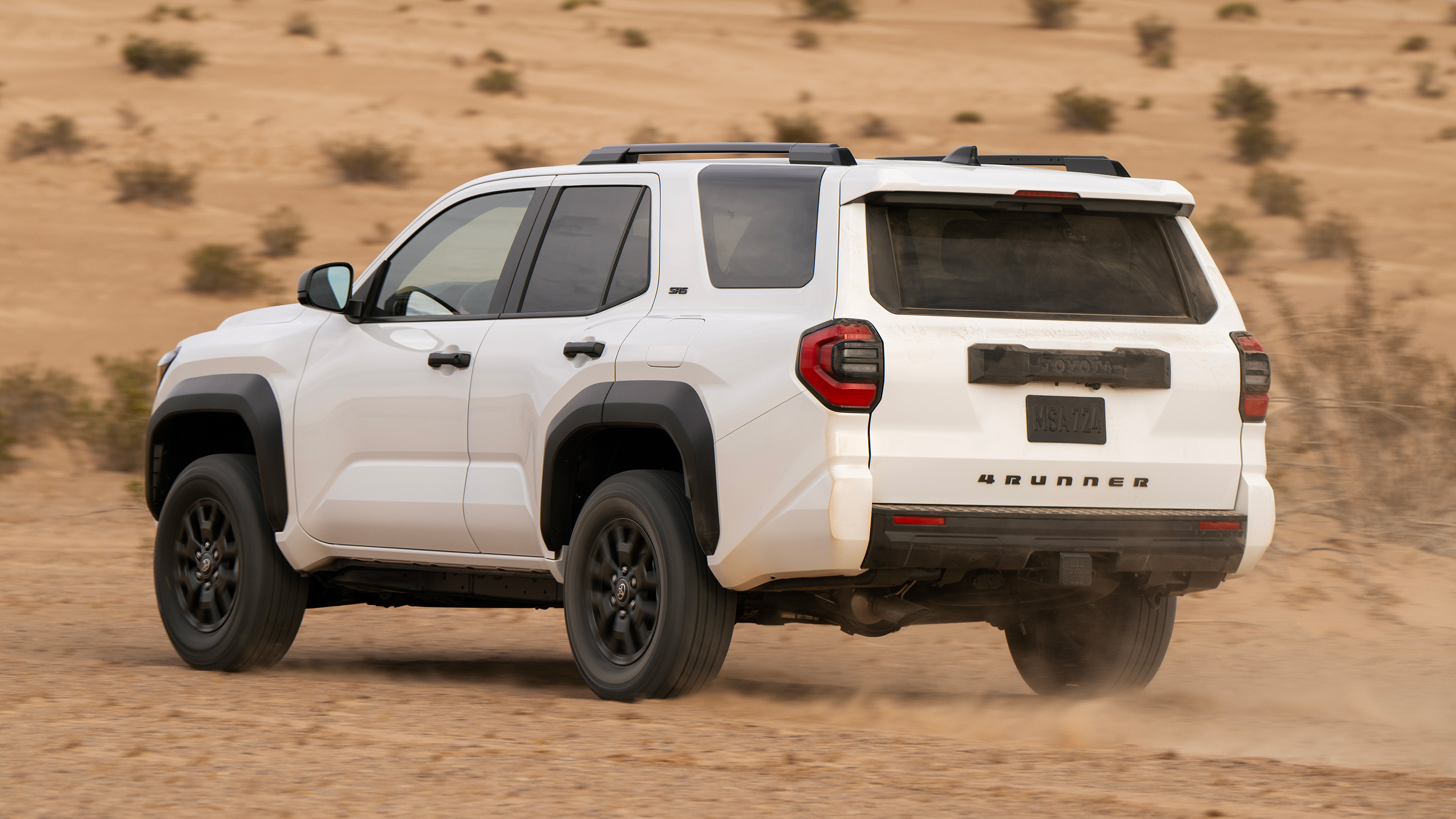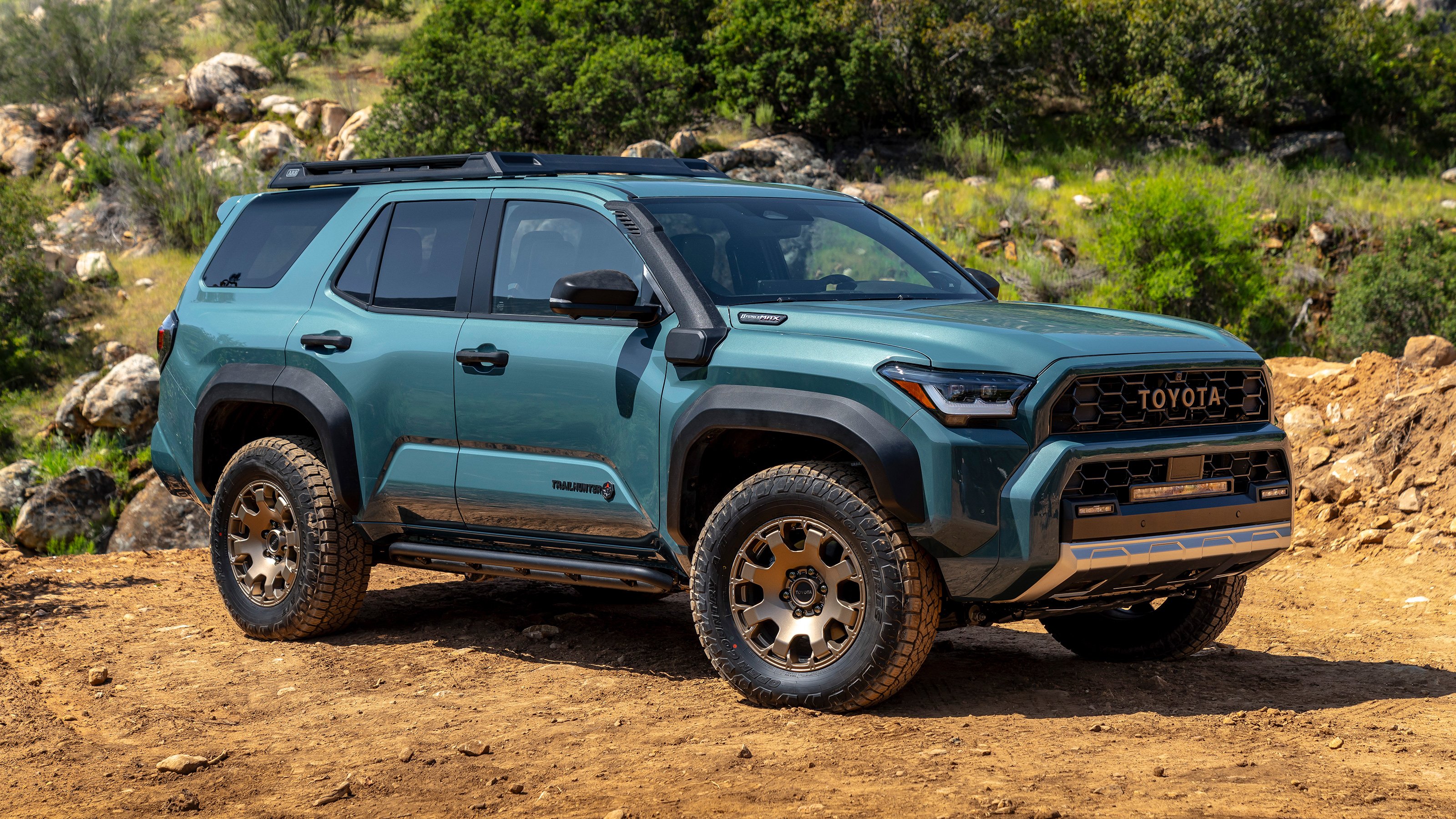
Toyota 4Runner (US) review
Good stuff
Chunky exterior, stylish interior, capable off-roader
Bad stuff
Laborious turbochargers, flimsy components, frustrating off-road camera
Overview
What is it?
It’s the all-new Toyota 4Runner, a decidedly old-school style off-roader upgraded to the modern era with a brand-new everything. That means a brand new platform, engine options, updated tech, and refreshed styling, all things 4Runner fans will love to hear.
Was that sarcasm? Maybe a pinch. We don’t expect this particular group of enthusiasts to get into a Star Wars-ian furore over them, but we suspect the diehards will take a bit to warm up to the much-needed upgrades.
Alright, so what are the big changes?
The 4Runner is built on Toyota’s TNGA-F platform for body-on-frame vehicles like the current Land Cruiser, Lexus GX and Tacoma pickup. In fact, there’s quite a lot of ‘Taco’ in this 4Runner, including the powertrain, suspension and other components to essentially make this the Tacoma of SUVs.
When it comes to engine options, the adventure vehicle is setup with a turbocharged 2.4-liter four-cylinder ‘i-Force’ engine that puts out 278hp and 317lb ft of torque. Depending on configuration, power goes to the rear or all four wheels by way of an eight-speed auto gearbox.
The other option is the i-Force Max, a hybrid version with the same engine that ups the output to 326hp and 465lb ft. All 4Runners with this grade are four-wheel drive. This option is meant to afford the 4Runner 23mpg, slightly superior to the 21-22mpg of the non-hybrid. In practice, it’s a stretch to get it there, but the result is still better than the atrocious fuel economy of the aged V6 that powered the former model. Most of the nine trim levels let you choose between the two configurations, but some are strictly one or the other.
Hold up, did you say *nine* trim levels?
Indeed we did. We’ll get into the myriad trims and configs shortly, but for now, the key highlights are that the mighty TRD Pro returns, but does so along with two new trims – Trailhunter and Premium. Trailhunter is meant to be the off-the-shelf overlanding compliment to the hard-hitting TRD Pro, with a unique suspension along with exclusive styling highlights. Premium is the new road-ready luxury flagship loaded with more fixings than a baked potato.
How is the 4Runner to drive on the road?
With either the turbo or turbo hybrid powertrain, the 4Runner goes about its business in a suitable fashion, neither wowing with its road-going prowess nor disappointing… so long as a heavy foot isn’t needed. Either for passing or for braking.
Certain trims with adaptive suspension are a bit softer for daily use, but even the off-road ready versions do well to prevent a teeth-rattling ride. It retains a touch of the truck-y feel that the platform provides, though it’s not at Tacoma levels nor even like the boxy Land Cruiser that also rides on the same foundation.
How is it off the road? The short answer is it’s fine. Putting 4WD 4Runners through their paces with both engine choices revealed that – surprise, surprise – Toyota still knows how to make a fully capable off-road vehicle. It travels on an independent front suspension and a multilink rear with coil springs with outboard mounted shocks. There’s between 8.1 to 10.1 inches (206-257mm) of ground clearance, working up from the SR5 to the TRD Pro and Trailhunter.
Departure and break over angles also range from 22 to 24 degrees while the top-tier trims are capable of a 33-degree approach angle, a big jump from the 19 degrees that other off-road trims can muster.
What makes it mostly okay is that it performs very technically, with little fuss and few thrills. Power was rarely an issue with either configuration but the 4Runner does raise an eyebrow surmounting steep climbs. It manages them, but begrudgingly and laboriously, with the transmission bearing most of the burden.
What's the verdict?
The Toyota 4Runner’s updated tech is very welcome, as are the powertrains replacing the downright vintage V6, but the adventure SUV sometimes struggles to overcome obstacles that should be well within its grasp. In terms of the turbo-four, it works overtime to compensate for its lack of inherent muscle – pairing it with the hybrid system helps, even if that comes at the cost of rear cargo space. Come to think of it, given how crushing the optional third row is in the non-hybrid, that might be a saving grace.
It feels in dire need of a proper breaking-in period – it’s too new for its creaks and quirks to be charming, and while it’s an effective terrain-tackler it can't match the Ford Bronco’s sense of adventure or the Jeep Cherokee’s road manners. Yes, it’s a progressive improvement over the outgoing model, but it doesn’t ‘fit right’. Yet.
The Rivals
Trending this week
- Car Review
BMW 1 Series








